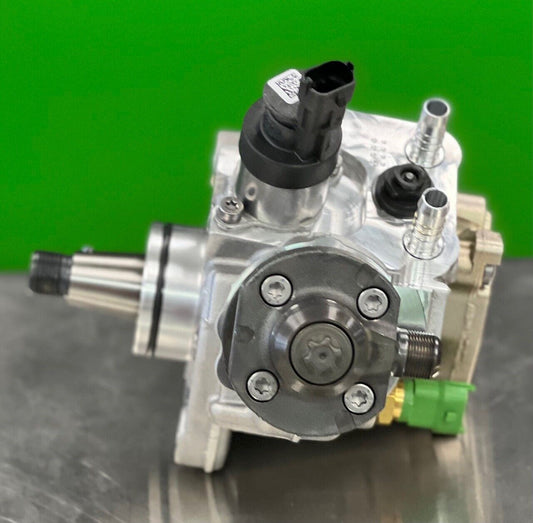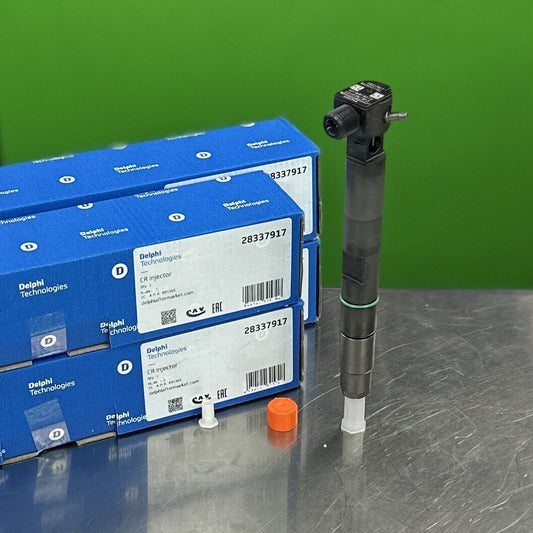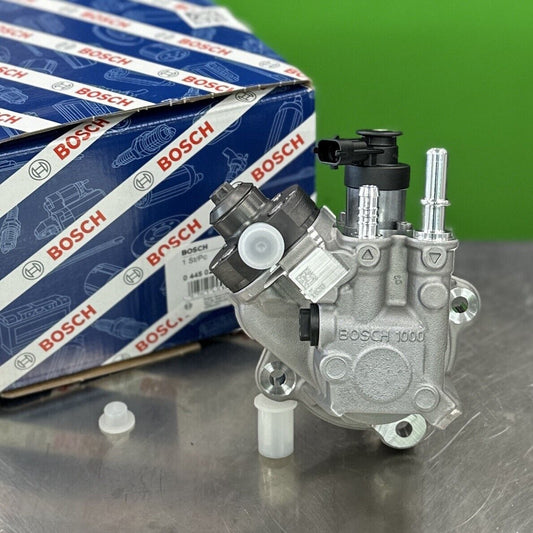Navistar DTA466 200-240HP Turbocharger Troubleshooting: Diagnosing and Solving Common Problems
This article delves into the common issues that arise with the Navistar DTA466 200-240HP turbocharger and offers valuable troubleshooting tips to effectively diagnose and resolve these problems. Turbochargers are essential components in enhancing engine performance and efficiency, but they can encounter various issues that affect their functionality. By understanding these common problems and knowing how to address them, you can ensure optimal performance and longevity for your Navistar DTA466 200-240HP turbocharger.
Understanding Turbocharger Basics
An essential component of modern engine technology, turbochargers play a crucial role in boosting the performance of vehicles. Understanding the basics of how a turbocharger operates is key to maximizing its efficiency. A turbocharger consists of two main components: the turbine and the compressor. The turbine is powered by exhaust gases from the engine, spinning a shaft connected to the compressor. The compressor then draws in and compresses air before delivering it to the engine at increased pressure.
Think of a turbocharger as a pair of lungs for an engine, allowing it to breathe more effectively and generate more power. By forcing more air into the combustion chamber, a turbocharger enables the engine to burn fuel more efficiently, resulting in increased horsepower and torque. This process, known as forced induction, enhances the overall performance of the vehicle without the need for a larger engine size.
One of the key benefits of a turbocharger is its ability to improve fuel efficiency. By increasing the amount of air entering the engine, a turbocharger enables more complete combustion of fuel, optimizing the engine's efficiency. This not only enhances performance but also helps reduce fuel consumption, making turbocharged engines more environmentally friendly.
However, like any mechanical component, turbochargers are susceptible to wear and tear over time. Regular maintenance and proper care are essential to ensure the longevity and reliability of the turbocharger. By understanding the fundamental principles of how a turbocharger works, drivers can better appreciate its importance and take proactive measures to address any issues that may arise.
Common Turbocharger Problems
When it comes to the Navistar DTA466 200-240HP turbocharger, there are several common problems that users may encounter. These issues can impact the performance of the turbocharger and, ultimately, the engine's overall efficiency. Let's delve into some of the typical turbocharger problems that users of this specific model may face.
One common issue with the Navistar DTA466 200-240HP turbocharger is boost leaks. Boost leaks can occur in the system and result in a loss of pressure, leading to decreased performance and efficiency. Detecting and addressing boost leaks promptly is crucial to prevent further damage to the turbocharger and the engine.
Another prevalent problem is compressor surge. Compressor surge happens when the airflow in the turbocharger is disrupted, causing a fluttering sound and potential damage to the turbocharger components. Resolving compressor surge is essential to maintain optimal power output and prevent long-term issues.
Furthermore, oil contamination is a significant concern with turbochargers. Contaminated oil can lead to clogged passages and reduced lubrication, affecting the turbocharger's performance. Regular maintenance and monitoring of oil quality are vital to prevent oil contamination and ensure the turbocharger's longevity.
Additionally, issues with the wastegate or actuator can also arise, impacting the turbocharger's boost control and overall performance. Ensuring the proper functioning of these components is crucial to maintain the turbocharger's efficiency and prevent potential damage.
In summary, being aware of these common turbocharger problems with the Navistar DTA466 200-240HP model is essential for users to diagnose issues early and take proactive measures to address them. By understanding these challenges and implementing effective troubleshooting strategies, users can optimize the performance and longevity of their turbocharger system.
Boost Leak Detection
When it comes to turbocharger issues, boost leaks are a common culprit that can significantly affect performance. Identifying and addressing boost leaks promptly is crucial to ensure your Navistar DTA466 200-240HP turbocharger operates smoothly and efficiently. But how do you detect these sneaky leaks before they cause serious damage?
One effective method for detecting boost leaks is to perform a boost leak test. This involves pressurizing the intake system and using a boost leak tester to pinpoint any leaks. By pressurizing the system, you can listen for hissing sounds or use a smoke machine to visually identify leaks. This process allows you to locate the source of the leak and take appropriate action to seal it.
Additionally, visually inspecting the intercooler, hoses, clamps, and connections for any signs of wear, cracks, or looseness can help in detecting potential boost leaks. Ensuring that all components are properly secured and in good condition is essential for maintaining optimal turbocharger performance.
Another method to detect boost leaks is to use a boost pressure gauge to monitor boost levels while driving. If you notice fluctuations or lower-than-expected boost pressure, it could indicate a leak in the system. Keeping an eye on the boost gauge can help you catch potential issues early on and prevent further damage to your turbocharger.
Regularly checking for boost leaks and addressing them promptly is key to maintaining the efficiency and longevity of your turbocharger. By being proactive in detecting and resolving boost leaks, you can enjoy optimal performance from your Navistar DTA466 200-240HP turbocharger and avoid costly repairs down the line.
Compressor Surge Solutions
Compressor surge is a common issue that can significantly impact the performance of the Navistar DTA466 200-240HP turbocharger. When the compressor experiences surge, it results in a sudden reversal of airflow within the turbocharger, leading to decreased efficiency and potential damage. Addressing this problem promptly is crucial to prevent further complications. So, what are the effective solutions to tackle compressor surge and ensure optimal turbocharger performance?
One of the primary strategies to combat compressor surge is to install an anti-surge or recirculation valve. This valve helps regulate the airflow and prevents the occurrence of surge by redirecting excess air back into the compressor inlet. By installing this valve, you can effectively manage the airflow within the turbocharger and mitigate the risk of surge-related issues.
Additionally, ensuring proper tuning of the engine's air-fuel ratio can also play a significant role in preventing compressor surge. A lean air-fuel mixture can lead to increased exhaust temperatures, which in turn can trigger surge conditions. By maintaining the optimal air-fuel ratio, you can promote smooth airflow through the turbocharger and reduce the likelihood of surge occurring.
Regularly inspecting and cleaning the compressor housing and impeller is another essential step in addressing compressor surge. Accumulated dirt, debris, or oil deposits can obstruct airflow and disrupt the compressor's performance, potentially leading to surge issues. By keeping these components clean and well-maintained, you can ensure efficient operation of the turbocharger and minimize the risk of surge-related problems.
Moreover, monitoring and adjusting the boost pressure levels can help prevent compressor surge. Excessive boost pressure can strain the turbocharger and trigger surge conditions. By carefully monitoring and regulating the boost pressure to the manufacturer's recommended levels, you can safeguard the turbocharger against surge and maintain optimal performance.
In conclusion, compressor surge can pose significant challenges to the Navistar DTA466 200-240HP turbocharger, impacting its efficiency and longevity. By implementing proactive solutions such as installing anti-surge valves, optimizing the air-fuel ratio, conducting regular maintenance, and monitoring boost pressure levels, you can effectively address compressor surge issues and ensure the smooth operation of the turbocharger. Taking these preventive measures can help enhance the performance and reliability of the turbocharger, ultimately maximizing the engine's overall efficiency and power output.
Turbocharger Maintenance Tips
When it comes to ensuring the longevity and optimal performance of your Navistar DTA466 200-240HP turbocharger, regular maintenance is key. By following some simple yet effective turbocharger maintenance tips, you can prevent potential issues and keep your engine running smoothly. Let's delve into some essential practices to care for your turbocharger:
1. Regular Inspections: Conduct routine visual inspections of the turbocharger system to check for any signs of wear, leaks, or damage. Look out for loose connections, worn-out hoses, or oil seepage that could indicate underlying issues.
2. Oil and Filter Changes: Ensure timely oil changes and filter replacements as per the manufacturer's recommendations. Clean oil is crucial for lubricating the turbocharger components and preventing premature wear. Use high-quality oil that meets the specifications for your engine.
3. Cool Down Period: After driving, allow the engine to idle for a few minutes before shutting it off. This helps in cooling down the turbocharger and prevents oil from coking within the unit, which can lead to damage over time.
4. Use Quality Fuel: Opt for high-quality fuel to maintain the cleanliness of the fuel system and prevent carbon buildup in the turbocharger. Contaminated fuel can cause injector issues and affect the overall performance of the engine.
5. Monitor Boost Levels: Keep an eye on the boost pressure levels of the turbocharger to ensure they are within the recommended range. Sudden spikes or drops in boost pressure could indicate a potential problem that needs attention.
6. Address Issues Promptly: If you notice any unusual noises, decreased performance, or warning lights related to the turbocharger, address them promptly. Ignoring small issues can lead to more significant problems down the line.
7. Professional Servicing: Schedule regular servicing with a qualified mechanic or technician who is experienced in turbocharger maintenance. They can perform thorough inspections and address any underlying issues effectively.
By following these turbocharger maintenance tips diligently, you can extend the lifespan of your Navistar DTA466 200-240HP turbocharger and enjoy optimal performance from your engine. Remember, a well-maintained turbocharger not only enhances your vehicle's power but also saves you from costly repairs in the long run.
```htmlFrequently Asked Questions
-
What are the common signs of a boost leak in a turbocharger system?
Common signs of a boost leak include decreased engine performance, whistling or hissing noises from the turbocharger, and potential loss of boost pressure. It is essential to address boost leaks promptly to prevent engine damage.
-
How can I detect oil contamination in my Navistar DTA466 200-240HP turbocharger?
Oil contamination in a turbocharger can be detected by inspecting the compressor wheel for oil residue, checking the air filter for oil saturation, and monitoring oil consumption. Regular maintenance and using high-quality oil can help prevent oil-related issues.
-
What are the maintenance tips to ensure the longevity of my turbocharger?
To prolong the lifespan of your turbocharger, it is crucial to follow regular maintenance schedules, use quality oil and filters, monitor boost levels, inspect for leaks, and avoid overworking the engine. Proper care and maintenance can prevent costly repairs and ensure optimal performance.



